Among the most modern and emancipated women of her time, Angelika Kauffmann (Chur, 1741 - Rome, 1807) was one of the most innovative and unconventional painters of the eighteenth century. In a world where it was very difficult for women to gain access to painting academies, Angelika was able to make her own way in the artistic universe dominated mainly by men, thanks in part to the recognition of her abilities by her father, Josef Johann Kauffmann, also a painter (famous is the portrait painted by his daughter in 1763 that belongs to the collections of the Tiroler Landesmuseen). The latter realized Angelika’s artistic talent at an early age and, understanding the impossibility of having her study at an academy and the difficulty of introducing the young girl’s painting skills to the most important circles of the time, with the pride of seeing in his daughter an heir he decided to have her travel with him and his wife especially to Italy, so that she could see the works of the great masters in the art centers of the peninsula. In fact, she spent a good six years there: thus she had the opportunity to admire the masterpieces of antiquity and of the artists before her, among Milan, Modena, Florence, Bologna, Naples, and Rome.
She completed her first self-portrait, when she was only twelve years old, as a singer: in addition to having excellent talents in painting, she was also very gifted musically, a passion to which her mother had initiated her, in addition to the study of languages; in the 1753 painting preserved in the collections of the Tiroler Landesmuseen she portrays herself, dressed in a typical eighteenth-century dress in shades of white, blue and pink, while holding a score in her hands. With a rather proud and determined expression, she looks the viewer straight in the eye; bows, lace, jewelry and a pretty collar adorn her, making her look more mature than her age in her very well-groomed appearance. The painting is the first evidence of her great talent as a portrait painter, as it was the first in a long series of self-portraits, at different ages, and portraits of members of high society.
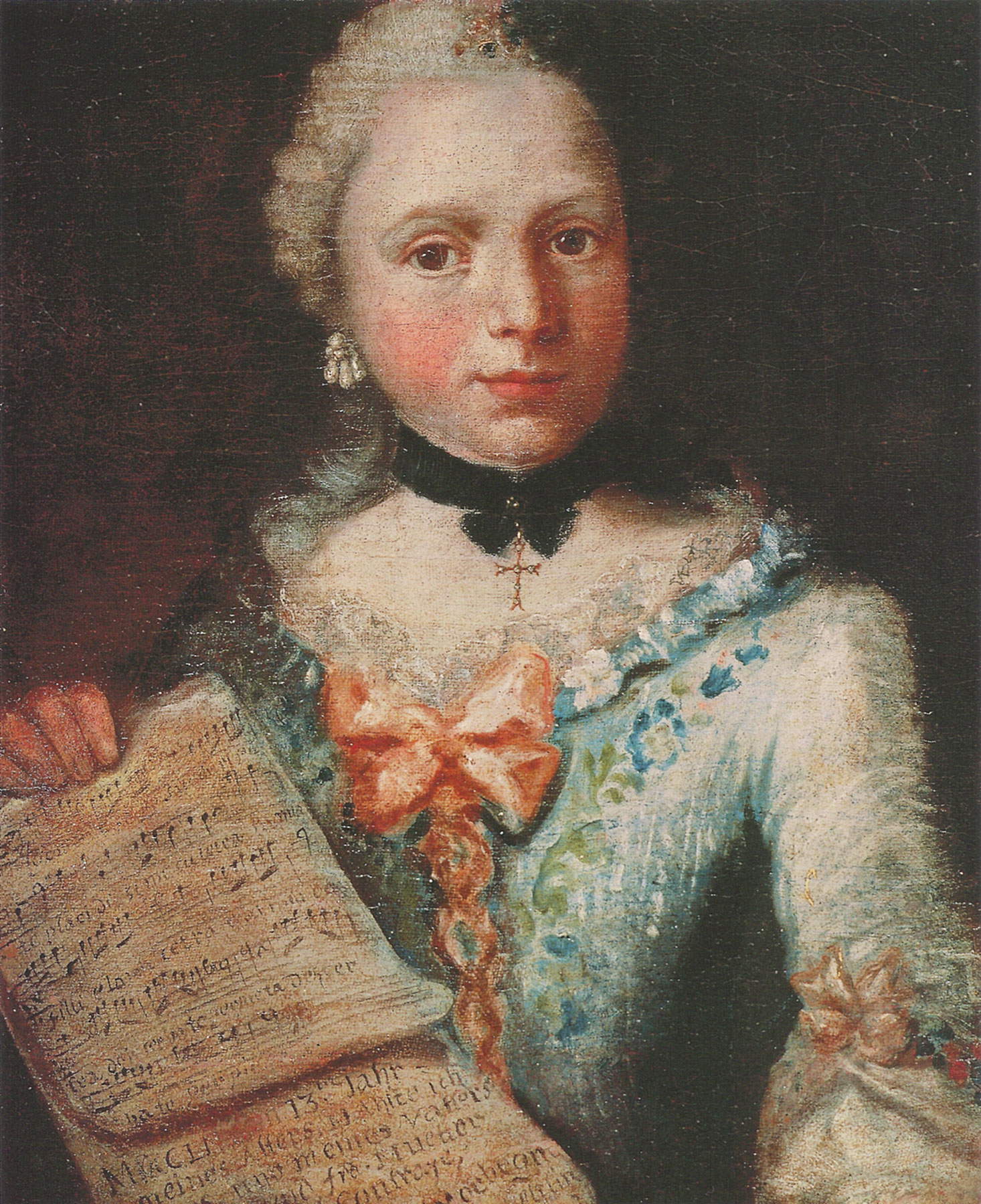 |
| Angelika Kauffmann, Self-Portrait with Sheet Music (1753; oil on canvas, 49.5 x 40.5 cm; Innsbruck; Tiroler Landesmuseen) |
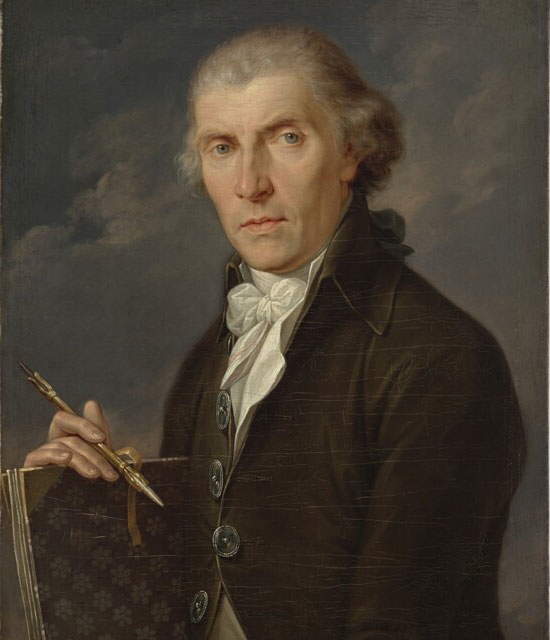 |
| Angelika Kauffmann, Portrait of Josef Johann Kauffmann (1763; Innsbruck; Tiroler Landesmuseen) |
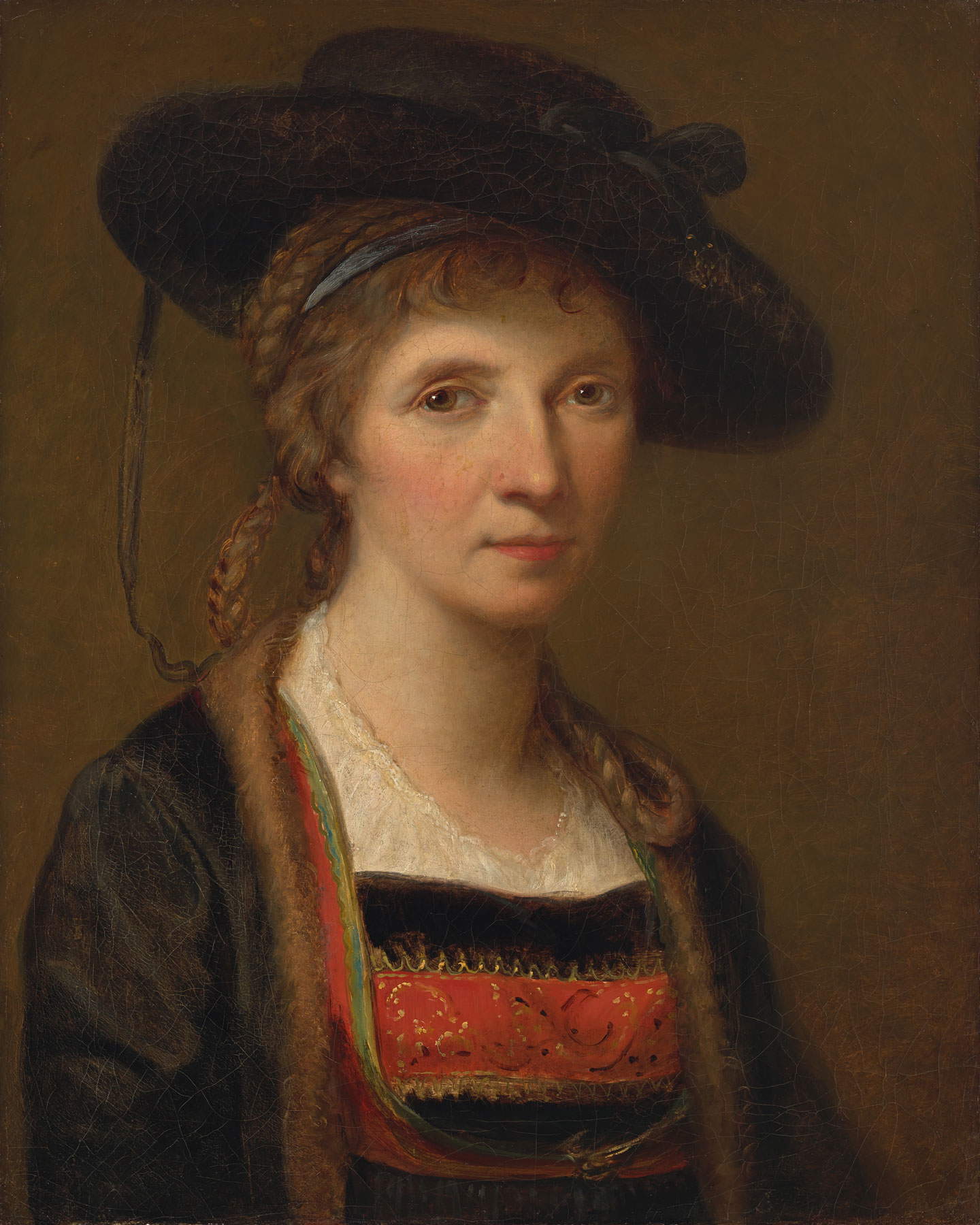 |
| Angelika Kauffmann, Self-portrait in traditional Bregenzerwald costume (1781; Innsbruck; Tiroler Landesmuseen) |
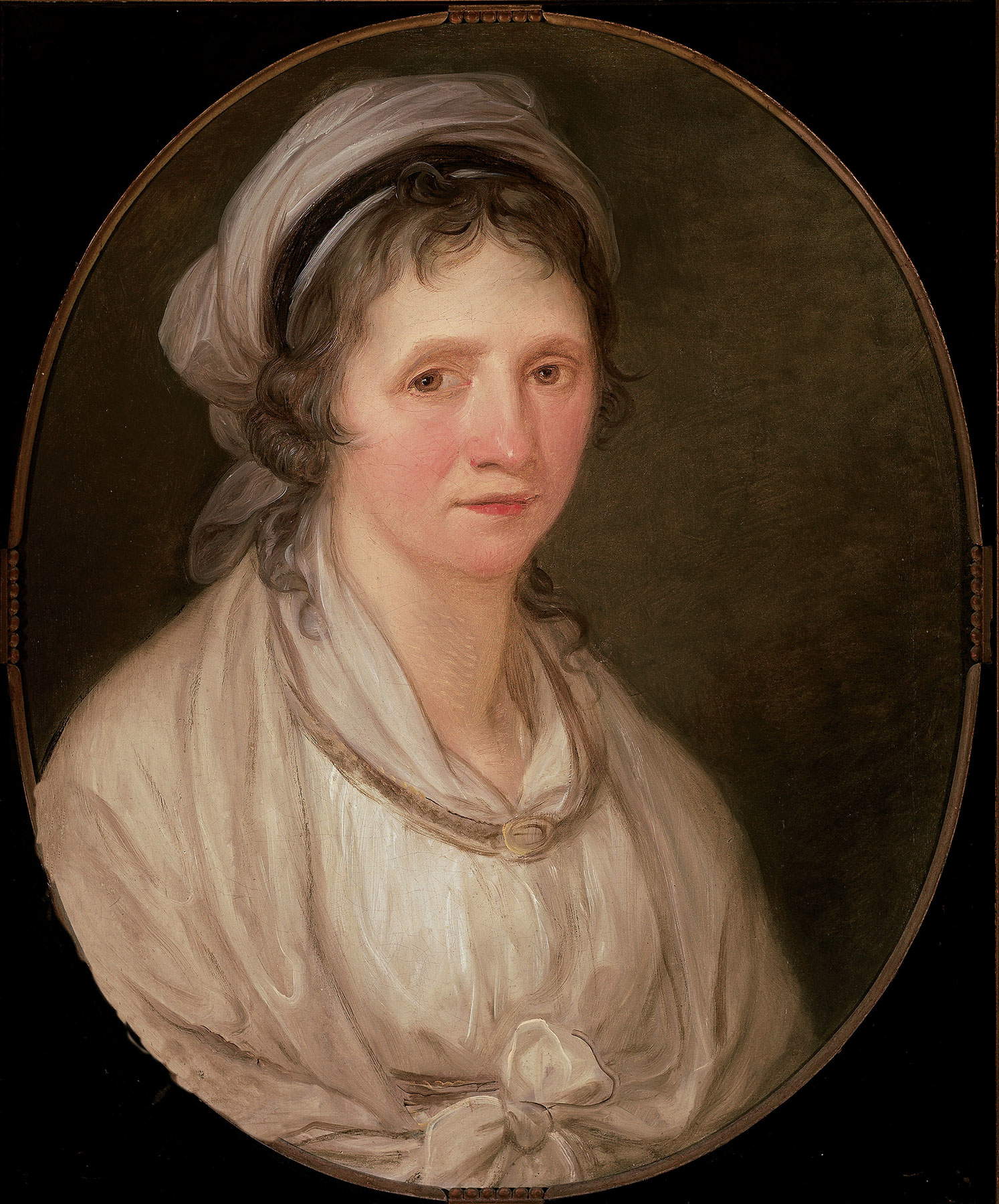 |
| Angelika Kauffmann, Self-portrait at age 61 (1802; Bregenz, Vorarlberg Museum). Photo by Markus Tretter |
Although she was born in Chur, Switzerland, in 1741 to a Swiss-born mother and an Austrian father from Schwarzenberg, a small village in the Bregenzerwald in the Vorarlberg region, Angelika Kauffmann was a cosmopolitan artist: she began to leave the borders of Austria at a very early age, spending her childhood and youth in Milan and Como, and several were her sojourns in Italy, so that her connection with the peninsula was very close and significant. In addition to studying from life the great masters, including Correggio, Guido Reni, the Carraccis, Domenichino, and Guercino, and the paintings in the Ducal Gallery in Florence, in 1762 she became an honorary member of theAccademia Clementina in Bologna and took her diploma at theAccademia del Disegno: although a woman, her talent allowed her to attend academia. In Rome, in 1765, she then became a member of theAccademia di San Luca , and in London, where she moved in 1766, she became a founding member of the Royal Academy of Arts two years later, the only woman along with the English painter Mary Moser.
While at the age of twelve she made her first self-portrait, at the age of sixteen she completed the frescoes in the church at Schwarzenberg in the Bregenzerwald, her father’s home village to which she returned with his father after the death of her mother. He painted thirteen portraits of apostles, so here, too, he devoted himself to portraiture, his passion. In her early twenties she opened her studio in London, and here she acquired a reputation as a successful portrait painter: all the high society of the time wanted to have their portraits painted by the famous painter, who came from Austria and had trained in Italy in prestigious institutions. Her studio became a veritable gathering place for the elite of the time, with whom she formed friendships, fitting fully into the environment, thanks to her talent and culture. Although well established in high society, she always declared herself an independent painter and never tied exclusively to a court: she preferred to receive commissions from wealthy members of society, from nobles and bankers, as well as from major Italian and foreign courts, but without any exclusive ties. Her cosmopolitan character led her to paint in the great cities, especially of Italy, where she herself had admired the works of the great masters, such as Rome, Florence, Venice, Naples, but also in London.
As skilled with the paintbrush as she was unlucky in love, at least in her first marriage experience: in 1767, when she had been in London barely a year, she fell in love with a Swedish count, but three months after her marriage to the latter she found herself separated and completely penniless. What had seemed to her to be the love of her life turned out instead to be an impostor. More than a decade had to elapse for her to return to sentimental trust in a man. In 1781, at the age of forty, she married in her second marriage to Antonio Zucchi (Venice, 1726 - Rome, 1795), also a painter but fifteen years her senior. He acted as her manager in the modern sense of the term: in fact, he was in charge of his wife’sartistic organization; however, she, mindful of the bad experience of the past, signed a contract for separation of property, demonstrating in this respect, too, her modernity and unconventionality, economically independent of her husband. An out-of-the-box attitude if one considers the macho model of society in which people lived in her time. Dating from the same year is one of her best-knownself-portraits, the Bregenzerwald Costume Self-Portrait, housed in the Tyrolean Regional Museum Ferdinandeum in Innsbruck. The two moved together to Rome, and here, as in London, Angelika’s studio became a meeting place for the elite, eager to be portrayed by the artist, and a point of reference for the city’s artistic and cultural milieu.
 |
| Interior of the Schwarzenberg church. Photo by Friedrich Böhringer |
 |
| Angelika Kauffmann, Kauffmann and the muse Clio (1787; Schwarzenberg, Angelika Kauffmann Museum). Photo by Robert Fressler |
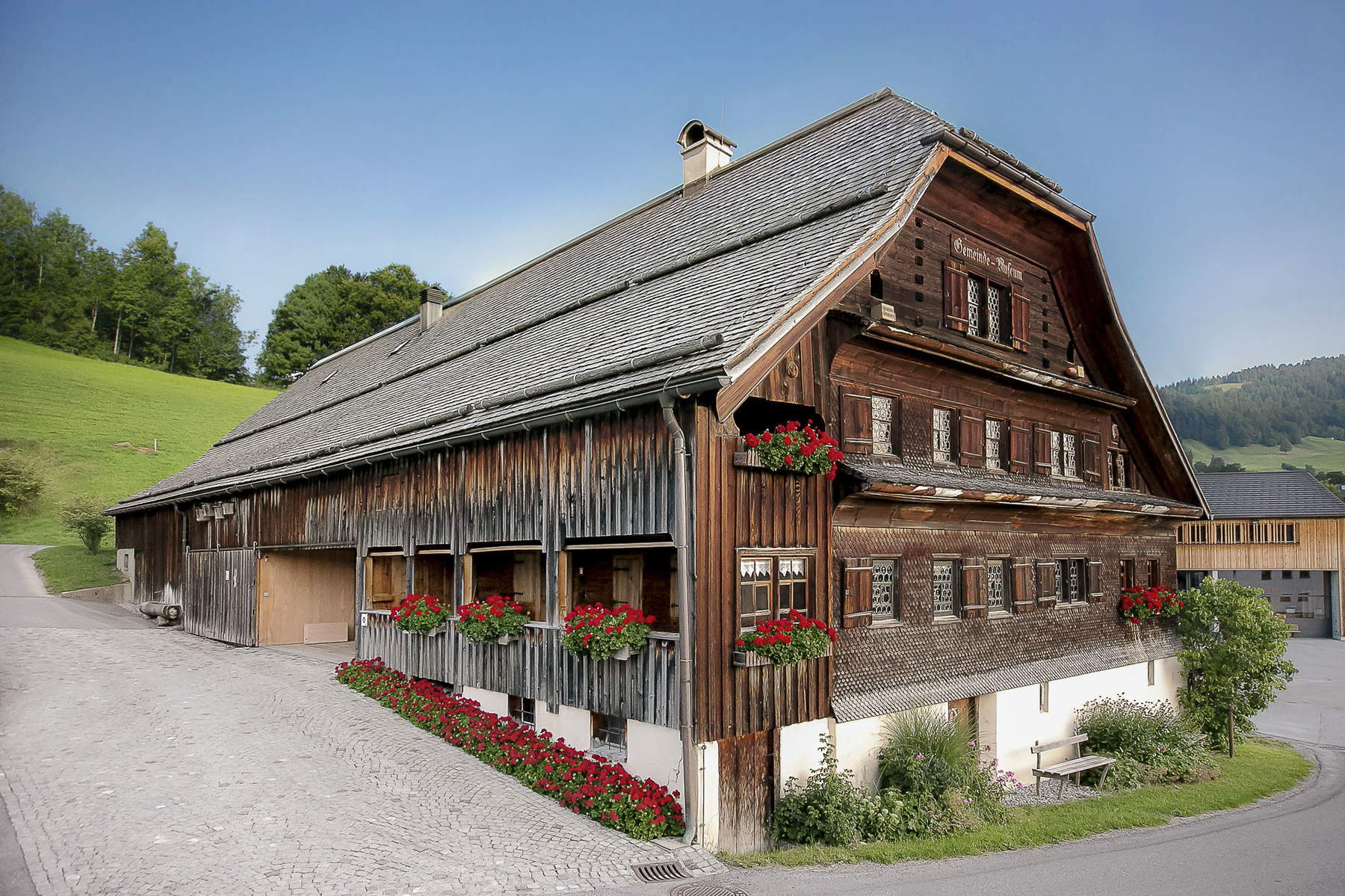 |
| Angelika Kauffmann Museum. Photo Hirschbueh |
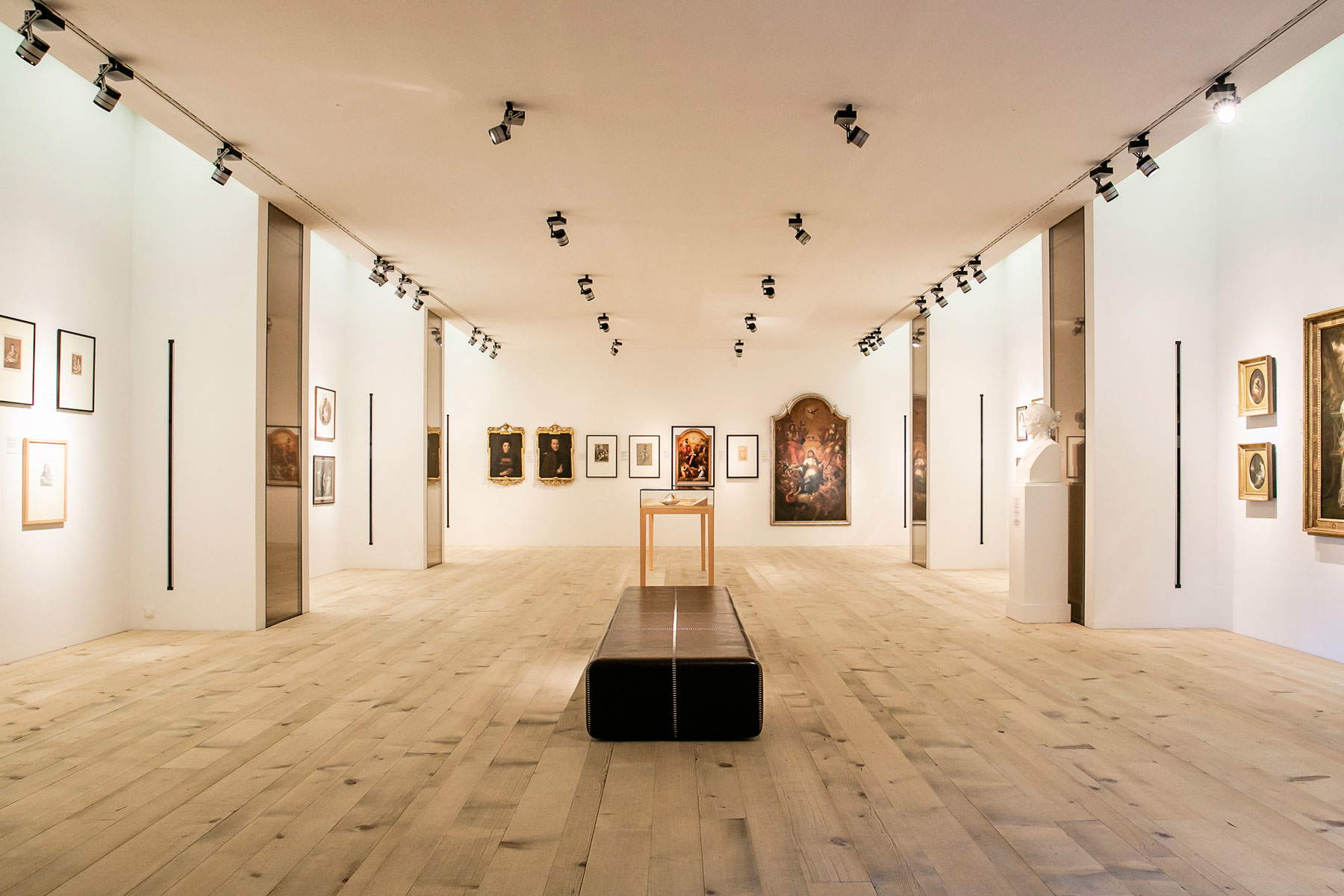 |
| Angelika Kauffmann Museum. Photo Hirschbuehl |
A widespread phenomenon in the eighteenth century among the nobility and bourgeoisie of Europe was the Grand Tour, that is, a long journey to continental Europe that was intended to perfect knowledge and understanding by moving within a city and to return home with a greatly enriched cultural background; favorite destinations of the Grand Tour were generally cities in Italy. As souvenirs, travelers often had their portraits painted by an artist, and many times the favorite painter was Kauffmann herself because of her extraordinary fame. It was on the Grand Tour that she met Goethe with whom she formed a deep friendship, so much so that when the writer left Rome she fell into depression, remembering the day of his departure as one of the saddest moments of her life. The Goethe National Museum in Weimar preserves the portrait the artist painted in 1787.
His style remained synonymous with modernity, charm and refinement even after his death in Rome in 1807. Until the twentieth century, every modern home possessed at least an engraving of his paintings, if not the originals, and many pieces of furniture and china featured some detail of his paintings. Her funeral, organized by a 50-year-old Antonio Canova , was attended by the most famous contemporary artists and men of letters, and two of her works and a cast of her hand were carried in procession for the occasion. She was buried beside her husband in Sant’Andrea delle Fratte, and the following year a bust of her was placed in the Pantheon near Raphael’s tomb.
A successful painter and style icon, Angelika Kauffmann is considered one of the greatest artists of neoclassicism, to which she also intertwined elements of seventeenth-century classicism (her portrait of her with the muse Clio from 1787 is an example). Many of her works are preserved in the museum dedicated to her in Schwarzenberg, which opened in 2007 in a historic house in Bregenzerwald: a museum created to celebrate the illustrious citizen through its permanent collection, temporary exhibitions and events.
To learn about Angelika Kauffmann, painting prodigy girl, visit austria.info.
Warning: the translation into English of the original Italian article was created using automatic tools. We undertake to review all articles, but we do not guarantee the total absence of inaccuracies in the translation due to the program. You can find the original by clicking on the ITA button. If you find any mistake,please contact us.